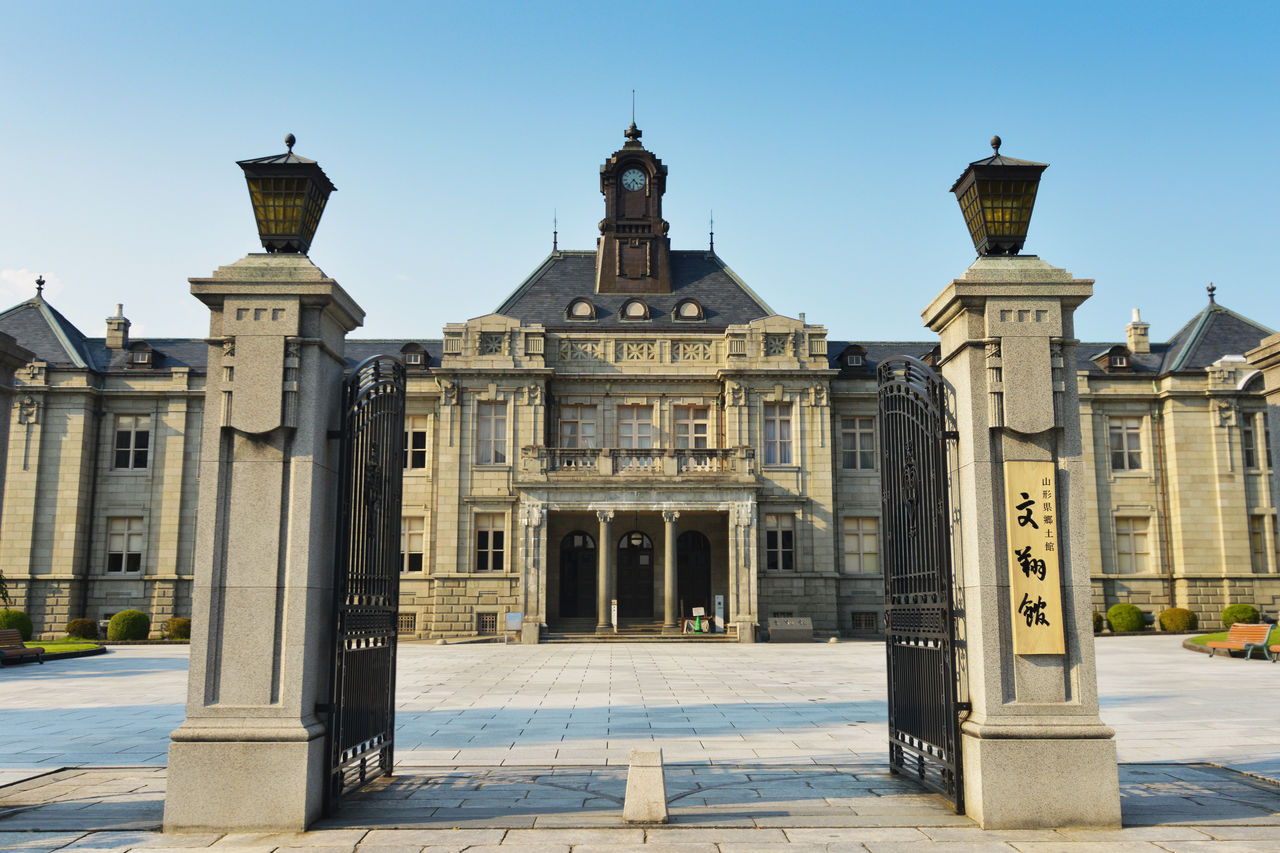
Ten Thousand Dancers at the Yamagata Hanagasa Matsuri
Guideto Japan
Culture- English
- 日本語
- 简体字
- 繁體字
- Français
- Español
- العربية
- Русский
A Recent Arrival on the Matsuri Scene
 The hanagasa hats with their bright red flowers are the festival’s symbol. (© Yamagata Prefecture Hanagasa Council)
The hanagasa hats with their bright red flowers are the festival’s symbol. (© Yamagata Prefecture Hanagasa Council)
The Yamagata Hanagasa Matsuri, which takes place every year from August 5 to 7, is a relative newcomer among the many summer festivals of the Tōhoku region. Started in 1963, the parade was originally just one part of the Zaō Summer Festival, an event to attract tourists to Yamagata Prefecture, but very quickly took on a life of its own.
The “Hanagasa ondo” song that provides the lively beat for the parade’s dancers is said to have first been sung in 1919 by workers building an embankment along the shore of Lake Tokura in the city of Obanazawa. As the workers pounded the dirt embankment, they would call and respond, “yassho, makasho.” This rhythmical chant would later become the theme song for the Yamagata Hanagasa Matsuri parade.
 A float depicting the mountain deity Zaō Dai Gongen leads the parade. (© Yamagata Prefecture Hanagasa Council)
A float depicting the mountain deity Zaō Dai Gongen leads the parade. (© Yamagata Prefecture Hanagasa Council)
The parade is led by a float depicting the mountain deity and festival patron, Zaō Dai Gongen. The float is followed by more than 10,000 dancers representing around 160 groups weaving their way down a 1.2-kilometer route along the main streets of the city of Yamagata.
Women dance the graceful “Kunpū mogamigawa,” men, the feisty “Zaō gyōkō.” Other dancers dramatically twirl their hanagasa flower hats in a dynamic style of dance native to Obanazawa, the city where the “Hanagasa ondo” originated, while still others make up their own freestyle moves. Most recently, a number of groups have been incorporating Western-style dance moves in their performances.
The wide range of dance styles all set to the same tune is one of the many distinguishing characteristics of this summer festival. Clad in matching costumes of their own design, each group of dancers makes its way along the parade route with precision, dancing with impeccably choreographed moves that enthrall the spectators.
Spectators Welcome to Join In
 Women dance the graceful “Kunpū mogamigawa.” (© Yamagata Prefecture Hanagasa Council)
Women dance the graceful “Kunpū mogamigawa.” (© Yamagata Prefecture Hanagasa Council)
During the early Edo period (1603–1868), Yamagata Prefecture was Japan’s foremost producer of safflower, the source of a special, high-quality textile dye. The hanagasa hats that are the symbol of the Yamagata Hanagasa Matsuri are decorated with bright red safflowers. The pounding of the drums, chants of “yassho, makasho,” and the wave upon wave of hanagasa hats combine to create a beautiful, dreamy effect.
 The children’s captivating performance is another highlight of the parade. (© Yamagata Prefecture Hanagasa Council)
The children’s captivating performance is another highlight of the parade. (© Yamagata Prefecture Hanagasa Council)
Those who are not satisfied with just watching can join in the fun at the end of the parade in the wa odori circle dance, or just “jump in” the tobiiri section at the tail end of the parade. There are only three requirements: you must carry a hanagasa hat, dance to the “Hanagasa ondo,” and have a good time! It’s a great way to get in with the locals on a hot midsummer’s night.
DATA
Yamagata Hanagasa Matsuri
- Locations: City center (from Tōkamachi to Honchō and Nanokamachi-dōri to the Bunshōkan), Yamagata, Yamagata Prefecture
- Tel.: 023-642-8753 (Yamagata Prefecture Hanagasa Council)
- Dates and time: August 5 to 7; 6:00 pm to 9:45 pm.
- Fee: Free
- Multilingual information:
- Website: http://www.hanagasa.jp/en/ (also available in Korean and simplified and traditional Chinese)
Nearby Attraction: Yamagata Prefectural Museum Bunshōkan
 The Bunshōkan is an outstanding example of Taishō period architecture. (© Shoepress)
The Bunshōkan is an outstanding example of Taishō period architecture. (© Shoepress)
The Bunshōkan is a structure built in 1916 in the British neoclassical style. It was originally used as the Yamagata prefectural office building and housed the prefectural assembly hall. The current building is a precise reconstruction of the original structure built over a 10-year period starting in 1986 and is a designated National Important Cultural Property. Notable features include handcrafted plaster decorations on the ceiling and a clock tower said to be the second oldest in Japan. The fine craftsmanship inside and out attracts numerous visitors every year.
DATA
Yamagata Prefectural Museum Bunshōkan
- Address: 3-4-51 Hatagomachi, Yamagata, Yamagata Prefecture
- Access: 25 min walk from JR Yamagata Station
- Tel.: 023-635-5500
- Hours: 9:00 am to 4:30 pm
- Closed: First and third Mondays of every month (when Monday is a national holiday, closed the next day) and closed December 29 to January 3.
- Fee: Free
- Multilingual information:
- Website: http://www.gakushubunka.jp/ (soon to be available in English, Korean, and simplified Chinese)
- Pamphlets available in English, Korean, and simplified Chinese
(Originally written in Japanese. Banner Photo: Dancers under brightly lit lanterns in the Yamagata Hanagasa Matsuri parade. Reporting and text by Shoepress. Photos courtesy of the Yamagata Prefecture Hanagasa Council, except where otherwise noted.)
